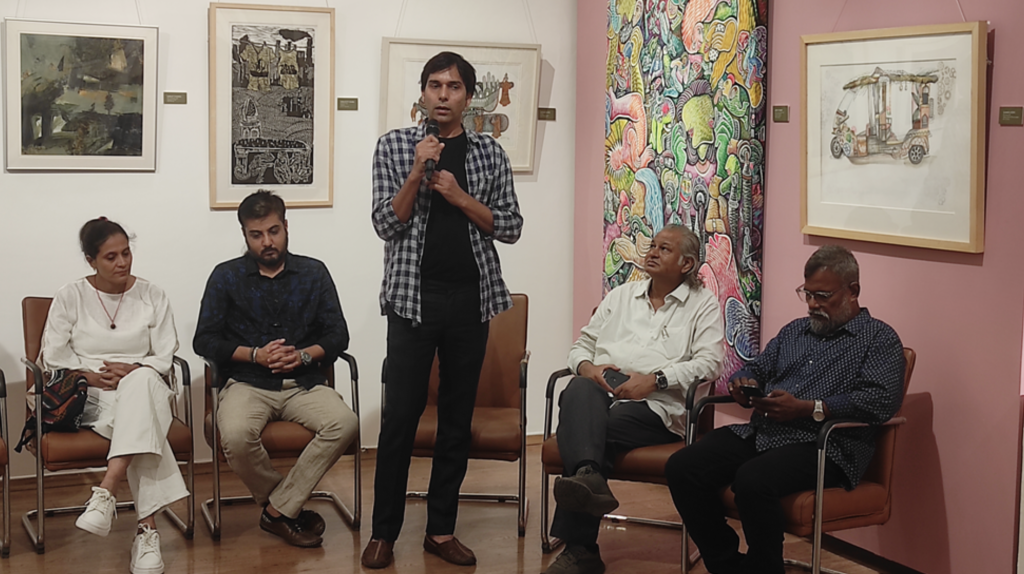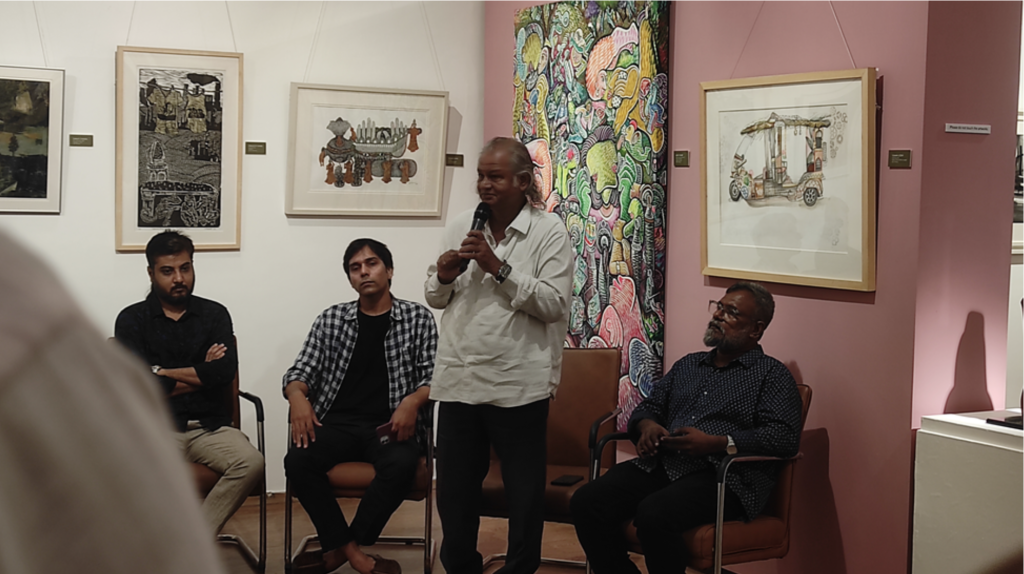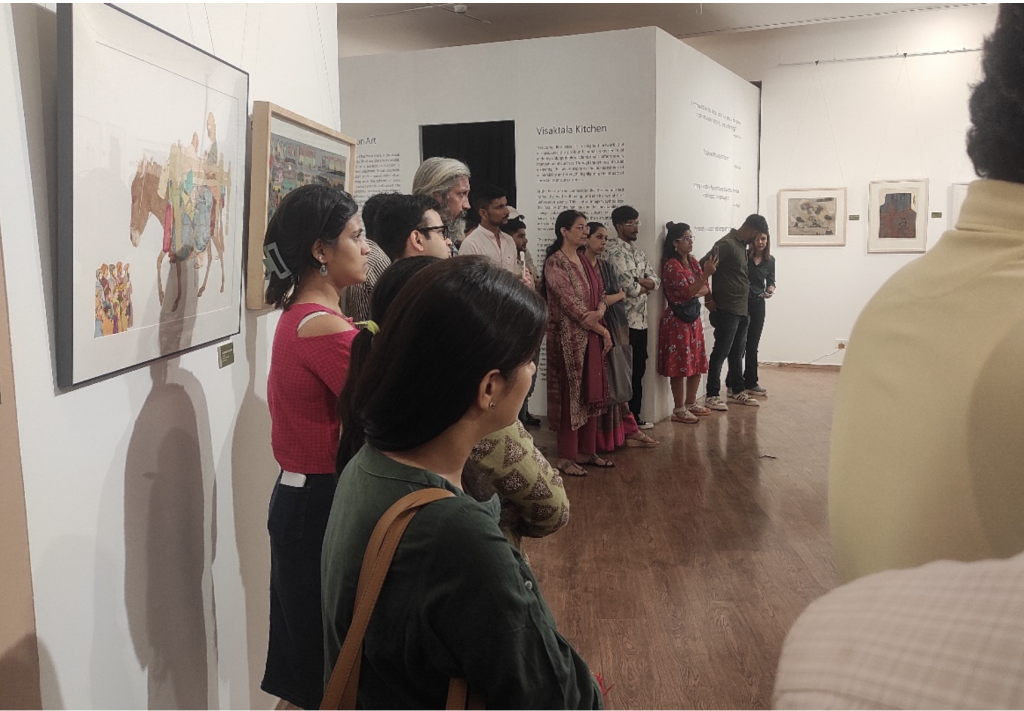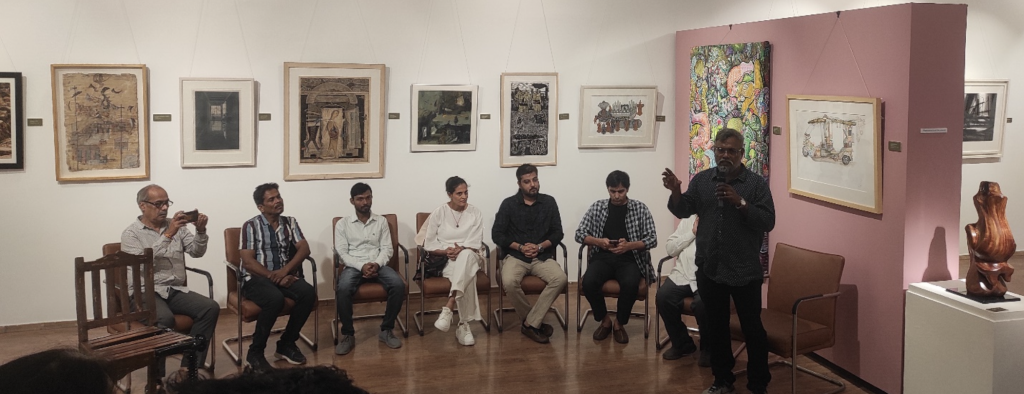A dialogue was organised by Lalit Kala Akademi between the National Award Winning artists and the public in an event called, “Art and Art of Storytelling.” As its name suggests, this event had a purpose to examine and inquire about those narratives that are often mixed with the work while doing it. These are the tales that every artwork says to the public, and in order to keep the intellectual hunger alive these narratives take the form of anonymous stories that everybody knits in their head with or without evaluating and exploring the deeper aspect of it. Is it essential for a work to tell the story? The truth could differ for many as it has no specific explanation. However, meanings and stories are always associated with the work in a broader context. This conversation was moderated by Johnny ML who asked this question of symbolism from every artist. I think it is their practice style that creates story and of course, there’s always a mapping of core ideas that shape the narratives.

Johnny thinks that the story is all about visualising the symbolical order or symbolic existence of human beings. Human beings have a lot of gestures and symbols and they live in symbols. Analysing those symbols is a vital part of the existence of human beings as social beings. Through narratives, they find allegiances and alliances with other human beings. So, such kinds of kinship and relationship are created throughout narratives. So, shared narratives actually become a nation or a place where people find themselves comfortable. So, narrative as I mentioned earlier, is a soup, the kind of cosmic soup that human beings always preferred to swim. So, my idea of art and storytelling is, that art is always seen as a symbolic order it is an intellectual activity expressed through the intervention of hand or tools. But the symbols have a narrative behind them, a story behind them and I am spooning that story or unpacking the symbolic complex or pattern which is vital in understanding the meaning of the art, as everybody is looking for the meaning. You often come to know, especially when you’re in a gallery, the maximum number of times you hear a question What is it about? People hardly ask about the medium, they think, they presume that they know the meaning, painting is painting for them they don’t know if it is oil on canvas or acrylic on canvas, watercolour, or whatever. There is less understanding about the mediums and people don’t ask for the mediums but only the meaning, they want to know what is behind it.

There’s a kind of invisible social contractor or kind of invisible practice between the artist and the viewer. That practice is all about letting the viewers know what is hidden behind the image. When the artist is absent, for example, he or she is absent in the gallery and people who are around the work will create stories. They tend to create narratives. For instance, when we see graffiti on a wall, we don’t know who has created it but if we see it every day, we’ll start making a story around it. And through anonymity, we create a kind of authorship, and maybe we are not enthusiastic enough to search for the author. Most of the people have their need to narrate their experiences or existence. Visual narrative is something and artist relate to but when it comes to the viewers, there’s an articulated social pattern where meanings have to be unpacked in front of them in some way.

Participating artists were, Ahipsa Pradhan, Atti Paliwal, Chugli Kumar Sahoo, Kumar Jigeeshu, Mahendra Pratap Dinkar, and Priyoum Talukdar. They all presented their own thoughts on narratives in their work and how they created such a kind of visualisation that has a lot to speak and to tell. They all reflected upon the deeper aspect of telling stories and why does a story is important in an artwork in a broader sense.
Feature Image: John ML, Moderator. Courtesy: Abir Pothi
Editions: An Exhibition of Prints by Nine Fish Gallery and a Workshop on Printmaking

Contributor





